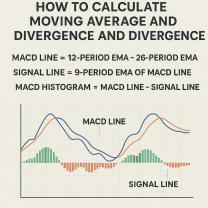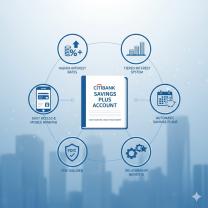How much sinking fund is enough?
The adequacy of a sinking fund depends on several factors, including the purpose of the fund, the expected future expenses or liabilities it needs to cover, and the time horizon for those expenses. Here are some considerations to help determine how much should be in a sinking fund:
Identify the Purpose:
- Clearly define the purpose of the sinking fund. Is it for a specific project, such as equipment replacement, maintenance, or debt repayment? Knowing the purpose will help estimate the required amount.
Calculate Future Expenses:
- Estimate the future expenses or liabilities that the sinking fund needs to cover. This could include anticipated repair or replacement costs, debt payments, or any other financial obligations.
Consider Inflation:
- Take into account the impact of inflation on future expenses. Money set aside today will likely have less purchasing power in the future. Adjust your calculations accordingly.
Assess the Time Horizon:
- Determine the time frame over which the expenses will occur. Short-term expenses may require smaller sinking funds, while long-term obligations may necessitate larger ones.
Account for Interest:
- If the sinking fund is invested, consider the potential interest or investment returns it can earn over time. Factoring in a reasonable rate of return can reduce the required contributions.
Review Past Expenses:
- Analyze historical data, if available, to identify patterns and trends in past expenses or obligations. This can provide insights into the level of funding needed.
Consult with Financial Advisors:
- Seek advice from financial advisors, accountants, or professionals experienced in budgeting and financial planning. They can help you determine an appropriate funding level.
Legally Required Minimums:
- In some cases, there may be legal or regulatory requirements specifying the minimum amount that must be in a sinking fund. Ensure compliance with any such mandates.
Risk Tolerance:
- Consider your organization's risk tolerance. Some entities may choose to overfund a sinking fund to provide a buffer against unexpected costs, while others may aim to minimize contributions.
Regular Monitoring and Adjustments:
- Once the sinking fund is established, regularly monitor its performance and compare it to the anticipated expenses. Adjust contributions as necessary to ensure the fund remains adequately funded.
Ultimately, the "right" amount for a sinking fund depends on your specific financial situation and goals. It's often a balance between meeting your financial obligations and ensuring the fund remains sustainable over time. Careful planning and ongoing management are essential to maintaining an adequate sinking fund. Consulting with financial professionals who specialize in this area can be valuable in making informed decisions about fund adequacy.
When Is Enough, Enough? Assessing the Adequacy of Your Sinking Fund
A sinking fund is a savings account that you set aside money for specific future expenses, such as a down payment on a house, a new car, or a vacation. It's important to assess the adequacy of your sinking fund on a regular basis to make sure that you're on track to meet your financial goals.
Here are some factors to consider when assessing the adequacy of your sinking fund:
- The amount of money you need to save. How much money do you need to save for your upcoming expense? Once you know how much money you need, you can create a budget to help you reach your goal.
- The time frame you have to save. How much time do you have to save for your upcoming expense? The shorter the time frame, the more money you'll need to save each month.
- Your current financial situation. How much money can you afford to save each month? Consider your income, expenses, and other financial obligations when setting a savings goal.
Ensuring Financial Security: Evaluating the Sufficiency of Your Sinking Fund
To evaluate the sufficiency of your sinking fund, you can use the following formula:
Sinking fund adequacy ratio = (Sinking fund balance / Upcoming expense) * 100%
A sinking fund adequacy ratio of 100% or higher means that you have enough money saved to cover your upcoming expense. A ratio of less than 100% means that you need to save more money.
Here are some tips for ensuring the sufficiency of your sinking fund:
- Review your sinking fund regularly. Update your sinking fund budget on a regular basis to make sure that you're on track to meet your goal.
- Increase your savings rate if possible. If you can afford to save more money each month, do so. This will help you reach your goal faster.
- Consider investing your sinking fund. If you have a long time horizon before your upcoming expense, you may want to consider investing your sinking fund. This can help you grow your money over time.
Financial Peace of Mind: Making Sure Your Sinking Fund Meets Your Needs
Having a fully funded sinking fund can give you peace of mind knowing that you have the money you need to cover your upcoming expenses. It can also help you avoid having to go into debt.
If you're not sure how to assess the adequacy of your sinking fund or how to create a budget, you may want to consider speaking with a financial advisor. They can help you create a plan that meets your individual needs.
Here are some additional tips for making sure your sinking fund meets your needs:
- Be realistic about your goals. Don't set unrealistic savings goals that you're not likely to meet.
- Be flexible. If your financial situation changes, be prepared to adjust your sinking fund goals and budget accordingly.
- Automate your savings. Set up a recurring transfer from your checking account to your sinking fund each month. This will help you save money consistently, even if you forget.
By following these tips, you can ensure that your sinking fund meets your needs and helps you achieve your financial goals.












